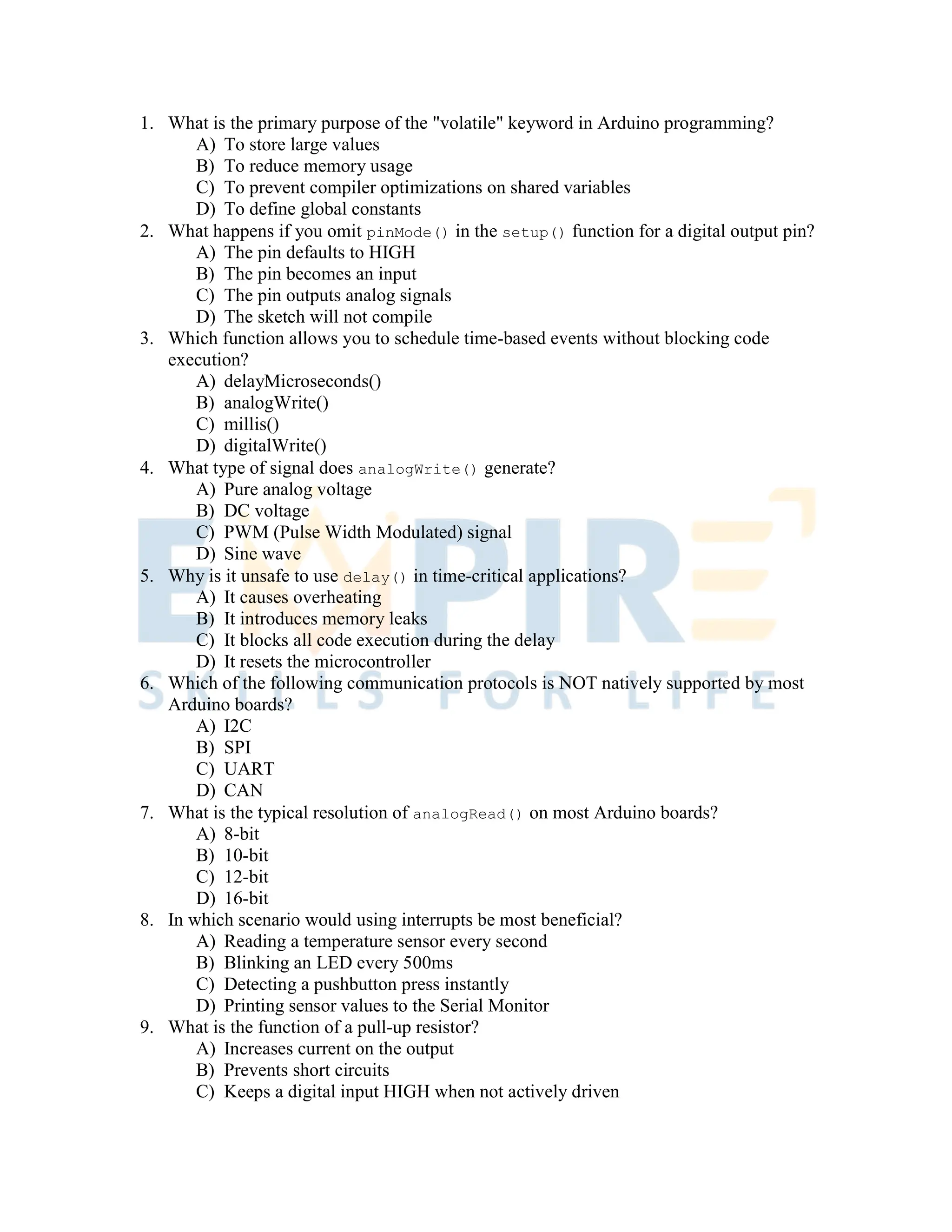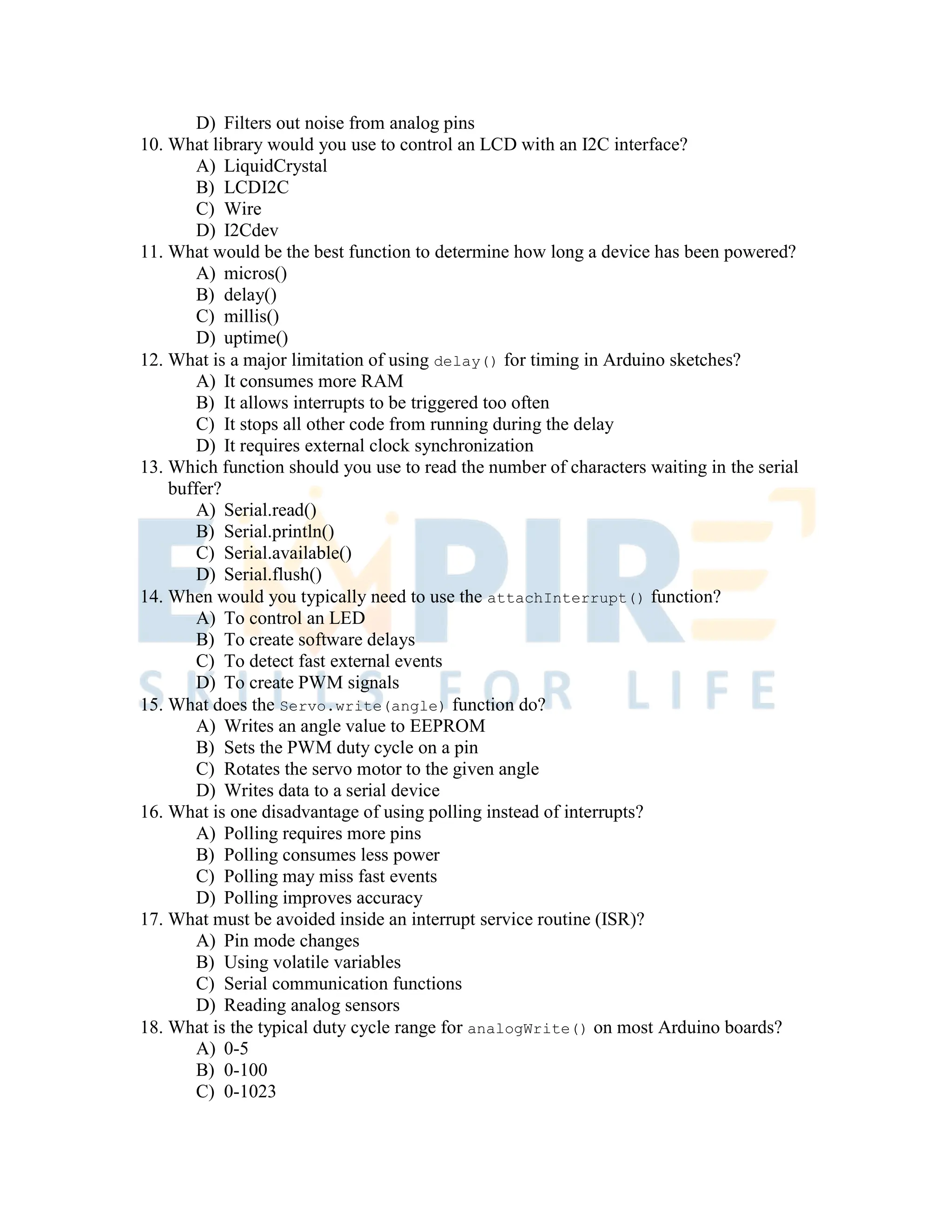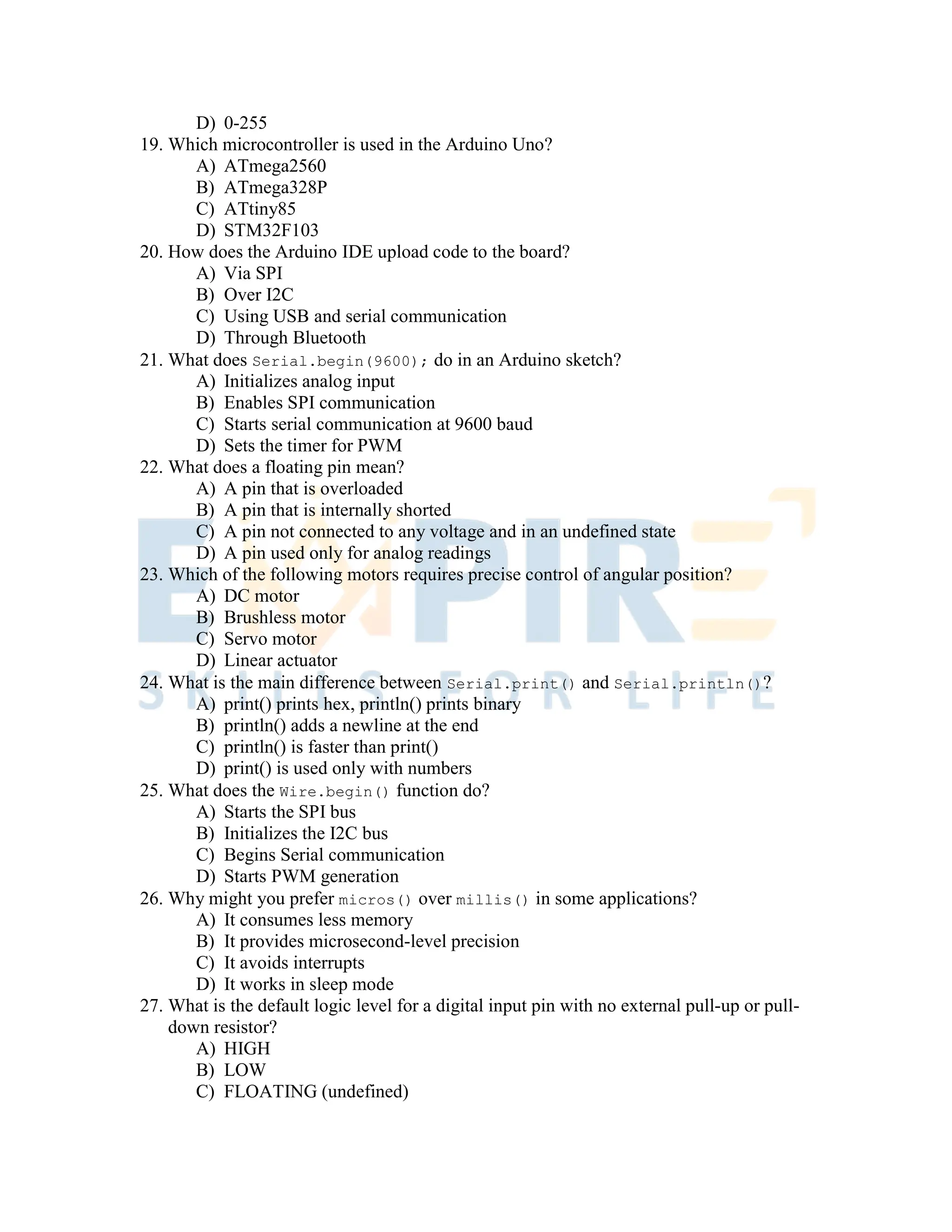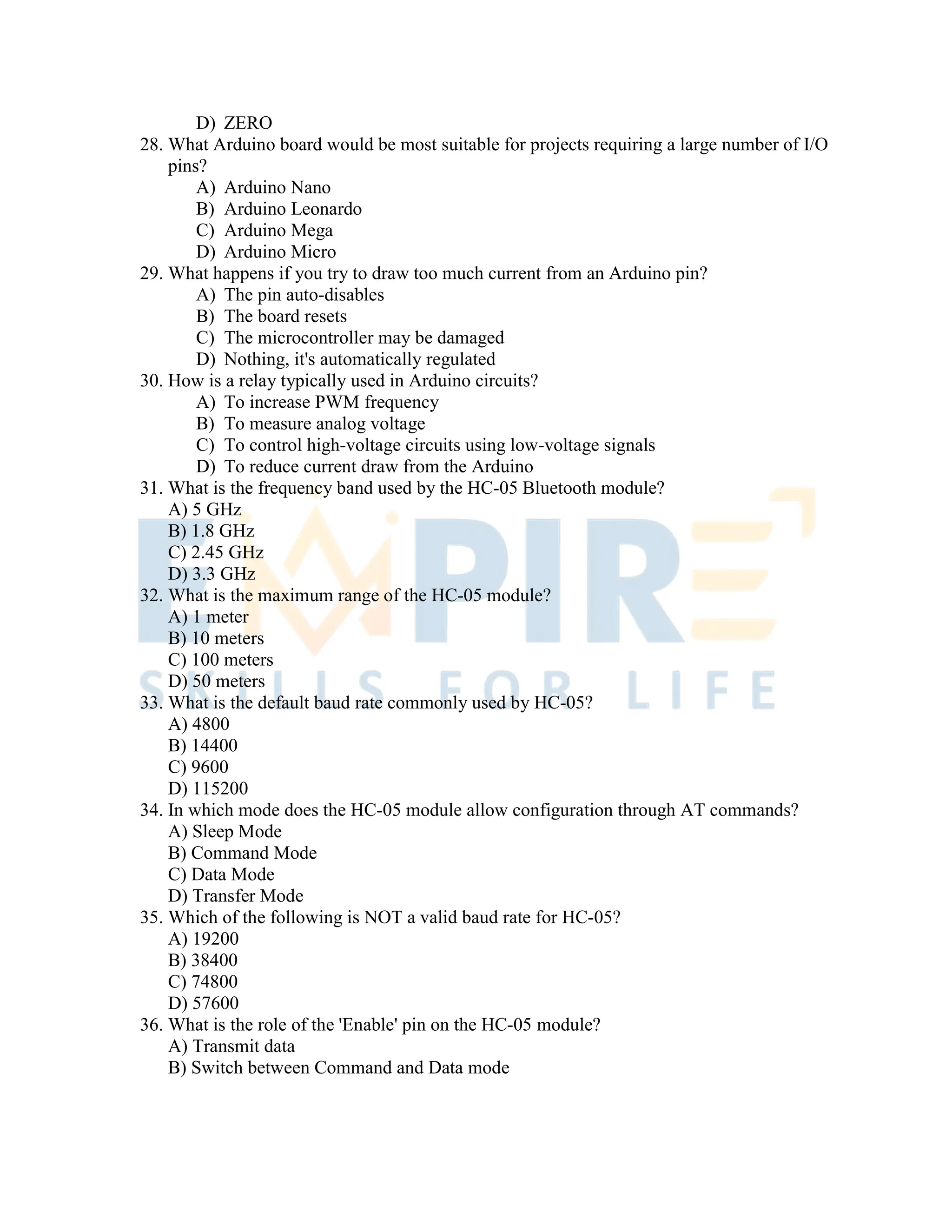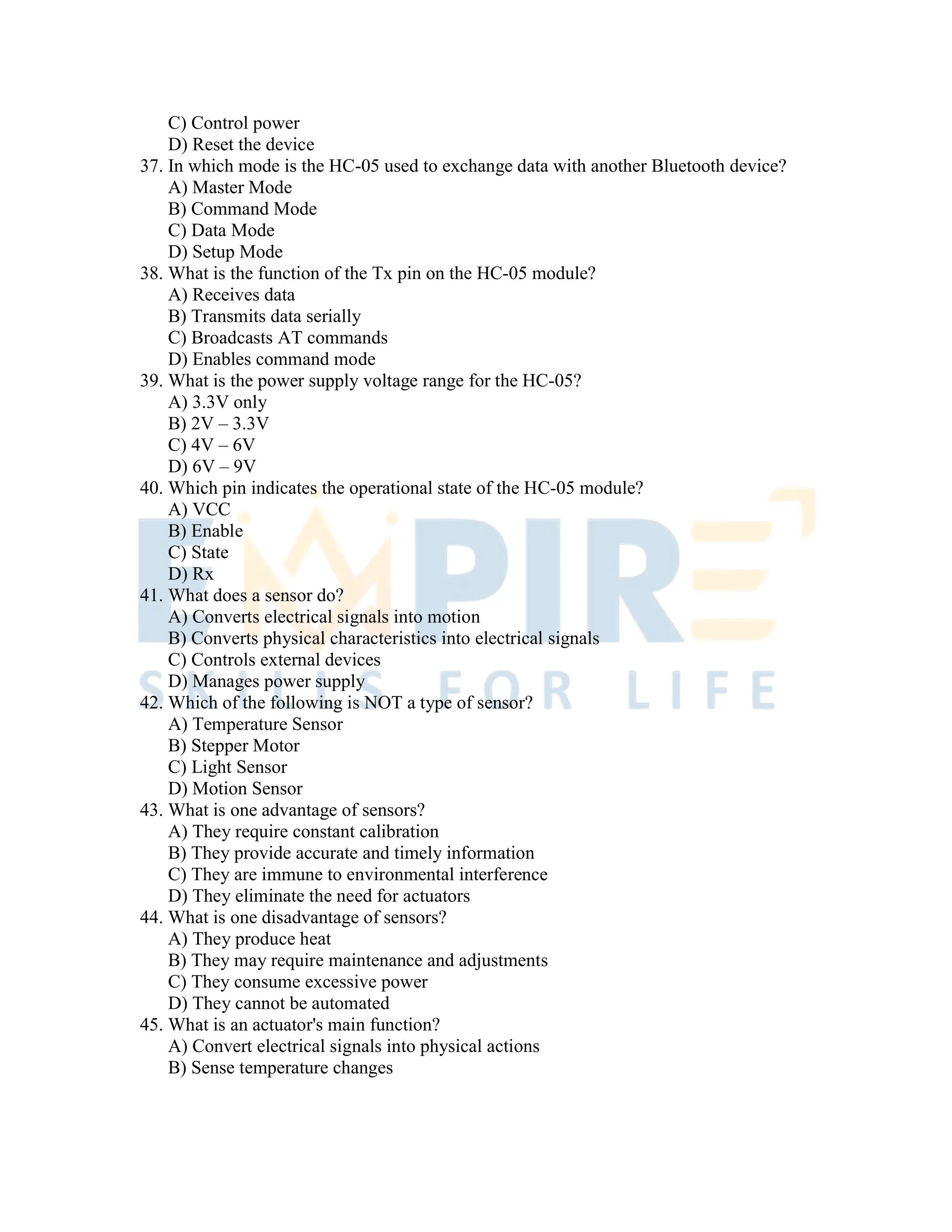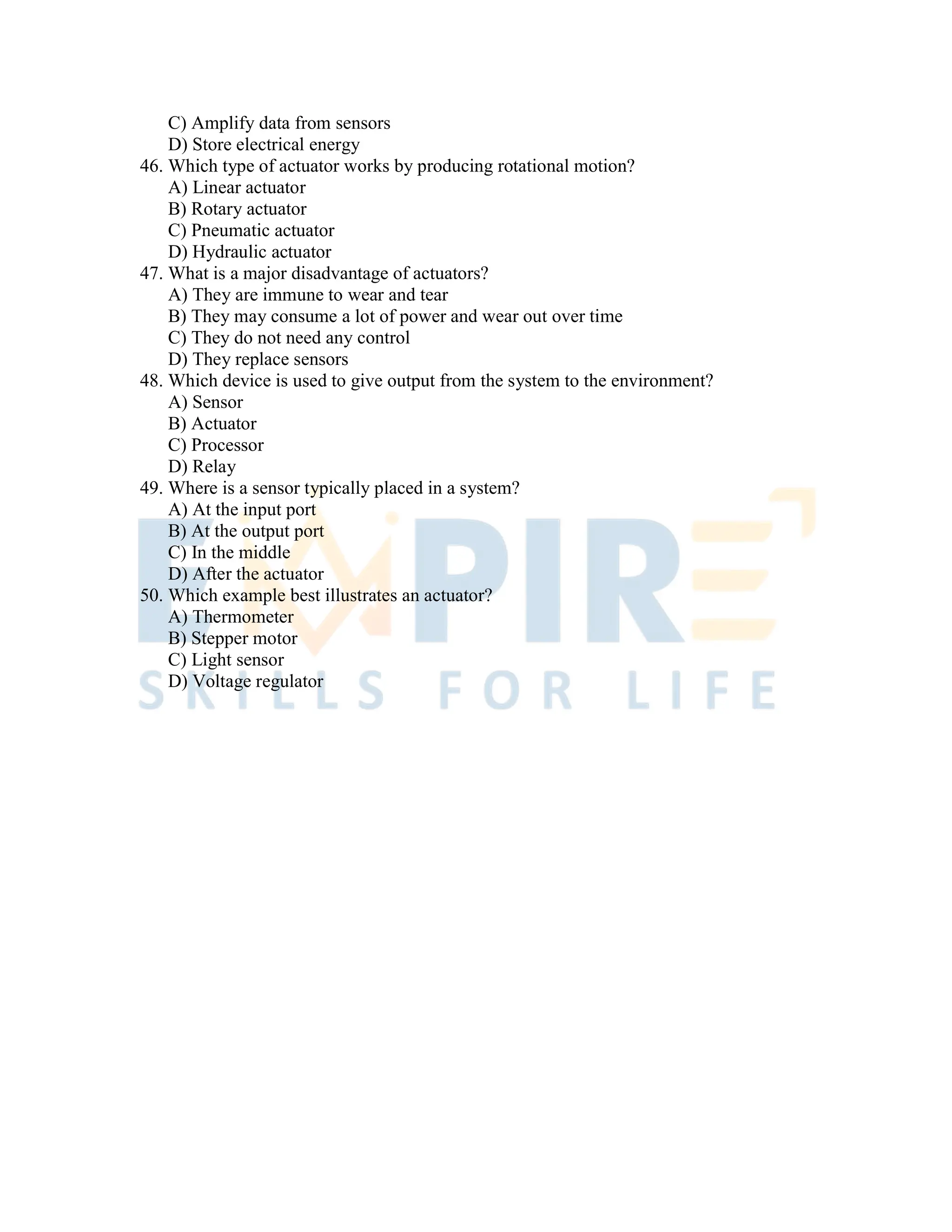Things and Connections Working of Controlled Systems, Real-time systems with feedback loop e.g. thermostat in refrigrator, AC, etc.Connectivity models – TCP/IP versus OSI model, different type of modes using wired and wireless methodology, The process flow of an IoT application. (iii)Sensors, Actuators and Microcontrollers Sensor - Measuring physical quantities in digital world e.g. light sensor, moisture sensor, temperature sensor, etc. Actuator – moving or controlling system e.g. DC motor, different type of actuators Controller – Role of microcontroller as gateway to interfacing sensors and actuators, microcontroller vs microprocessor, different type of microcontrollers in embedded ecosystem. (iv) Building IoT applications Introduction to Arduino IDE – writing code in sketch, compiling-debugging, uploading the file to Arduino board, role of serial monitor. Embedded ‘C’ Language basics - Variables and Identifiers, Built-in Data Types, Arithmetic operators and Expressions, Constants and Literals, assignment. Conditional Statements and Loops - Decision making using Relational Operators, Logical Connectives - conditions, if-else statement, Loops: while loop, do while, for loop, Nested loops, Infinite loops, Switch statement. Arrays – Declaring and manipulating single dimension arrays Functions - Standard Library of C functions in Arduino IDE, Prototype of a function: Formal parameter list, Return Type, Function call. Interfacing sensors – The working of digital versus analog pins in Arduino platform, interfacing LED, Button, Sensors-DHT, LDR, MQ135, IR. Display the data on Liquid Crystal Display(LCD), interfacing keypad Serial communication – interfacing HC-05(Bluetooth module) Control/handle 220V AC supply – interfacing relay module.
